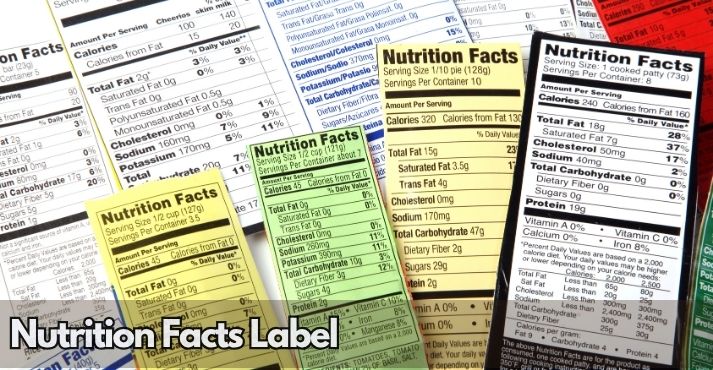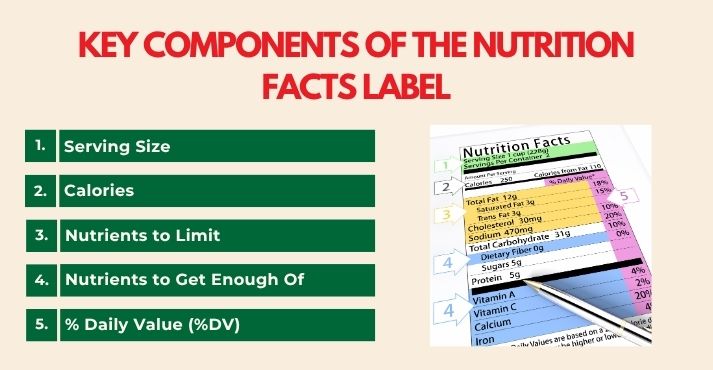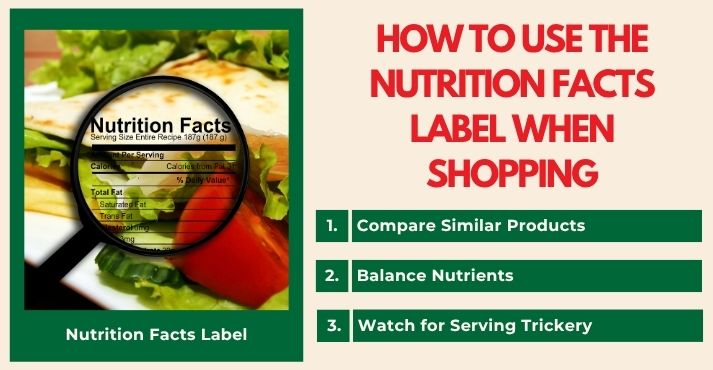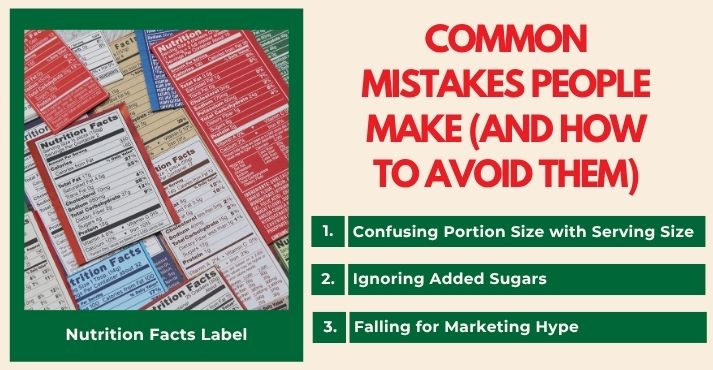Grocery shopping often means standing in an aisle, holding two similar products, and wondering which one is the healthier choice. Turning the package around, you see the Nutrition Facts label filled with numbers and terms that can feel overwhelming.
Learning to understand the Nutrition Facts label is a powerful way to make more informed and healthier decisions.
This label provides essential information that helps individuals choose products to meet personal health goals, whether the focus is on managing weight, reducing sodium, or increasing fiber.
It also supports businesses in offering options that align with customers’ nutritional needs and builds trust through transparency.
In this blog, we will break down the different parts of the label to make it easier to understand and follow.
We will look at serving sizes, calories, essential nutrients, and how to interpret the percentage of Daily Value. By the end, you will feel more confident using this information to support a healthier lifestyle.
What is the Nutrition Facts Label and Why it Matters

The Nutrition Facts label is a standardized panel required by regulatory bodies such as the US Food and Drug Administration and Health Canada. It presents consistent food label components including serving size, calories, fats, carbohydrates, protein, vitamins, and minerals.
These details help consumers compare products across brands and make better food decisions. Almost all packaged foods are required to display this label to ensure transparency and protect public health.
This label indicates the amount of each nutrient in one serving and explains how a portion fits into your daily diet. The daily value percentage tells you whether a food is high or low in a specific nutrient.
For example, if a snack provides 25% of the daily value for fiber, it contributes a quarter of what an average adult needs each day. This makes it easier to focus on nutrients you want more of, such as fiber or calcium, and limit those you should reduce, like saturated fat or added sugar.
Many people in the food service industry and regular shoppers still overlook the Nutrition Facts Label. Taste remains the most prevalent factor for US consumers in determining food choices at 85%, followed by price at 76% and health at 62%.
In Europe, 29% of shoppers reported that they shop too quickly to read labels, and 26% found them too complex.
Skipping this label can mean missing important details that support your health. Taking a moment to understand what is inside your food helps you avoid hidden sugars, excess sodium, and unhealthy fats.
Making this simple habit part of your routine can lead to lasting benefits for your overall well-being.
Key Components of the Nutrition Facts Label

The Nutrition Facts label gives a clear picture of what is in your food. By breaking it into parts, you can better understand how each product fits into your daily needs. This section will guide you through the main points to help you make confident choices.
1. Serving Size
Serving size refers to the standard amount of food or drink that a person typically consumes. It also indicates the number of servings in the package. The nutrition information on the label is based on the serving size listed.
Many people eat more than this amount, so it is essential to check. For example, if a serving size is one cup but you eat two cups, you get double the calories, fat, and other nutrients. Always compare the serving size to the amount you actually eat to get an accurate picture.
2. Calories
Calories tell you how much energy you get from one serving. If you eat more than one serving, your calorie intake increases. For example, if a snack has 200 calories per serving and you eat two servings, that equals 400 calories.
Understanding calorie count helps you balance your daily intake, which for most adults is around 2,000 calories per day, though this can vary based on age, activity level, and health goals.
3. Nutrients to Limit
Nutrients to limit include saturated fat, trans fat, sodium, and added sugars. Overeating of these foods can raise the risk of heart disease and high blood pressure.
Use the daily value percentage as a guide: 5% or less per serving is considered low, and 20% or more is considered high. For example, if a frozen meal has 25% of your daily sodium, that is a large share of your limit in just one serving.
4. Nutrients to Get Enough Of
These are nutrients that many people do not get enough of, but are important for good health. Examples include:
- Calcium for strong bones.
- Fibre for digestive health.
- Protein for muscle maintenance.
- Iron for healthy blood.
- Potassium for heart and muscle function.
- Vitamin D for bone strength.
Choosing foods rich in these nutrients supports overall wellness and helps prevent deficiencies.
5. % Daily Value (%DV)
The %DV shows how much a nutrient in one serving contributes to a daily diet based on 2,000 calories. It helps you see if a food is high or low in a nutrient and allows you to compare products.
For example, if one cereal has 10% of the daily value for iron and another has 45%, the second one is a better source of iron.
A recent survey found that 75% of consumers are willing to pay extra for clean-label ingredients that they can recognize and trust.
As more people seek sustainable food options, learning to read and understand food labels can support both personal health and a healthier environment.
Being comfortable with these details makes it easier to choose products that fit your needs and feel confident in what you eat.
How to Use the Nutrition Facts Label When Shopping

The Nutrition Facts label is more than a block of numbers on the back of a package. It helps you choose foods that match your health goals and personal preferences.
By learning how to read food labels, you can shop smarter and avoid being misled by flashy marketing on the front of the package.
When deciding between two products, look beyond the calorie count and check for nutrients like fiber, sugar, and fat. This habit helps you find better options and make choices that support long-term health.
1. Compare Similar Products
When you stand in front of shelves filled with different brands of granola bars, it can be hard to know which one to pick. One bar might look healthy but contain more sugar and less fibre than another.
Choose options lower in saturated fat, sodium, and added sugar while looking for higher fibre and protein content. For example, a bar with 3 grams of fibre and 5 grams of sugar is often a better choice than one with 1 gram of fibre and 12 grams of sugar.
In restaurants, similar comparisons happen when evaluating menu items or packaged sides. Reviewing ingredient lists and nutrition information carefully helps operators and chefs offer choices that align with health-focused trends and customer expectations.
This approach supports both individual health and the growing demand for clear, trustworthy menu options.
2. Balance Nutrients
Look for a good balance: moderate calories, low saturated fat, and high fibre. A product labeled “low fat” might seem healthy at first glance, but it can sometimes be high in sugar to make up for taste. Always check the full label rather than relying on front-of-package claims.
This mindset also applies when considering menu psychology in the restaurant industry. Terms like “light,” “fresh,” or “fit” can create a health halo, influencing customers to believe an item is healthier than it truly is.
For chefs, operators, and food service teams, using these words responsibly is important to support transparent communication.
Understanding how to present balanced choices on menus not only builds trust but also helps meet the increasing demand of customers for healthier and more transparent options.
3. Watch for Serving Trickery
Brands often list small serving sizes to make the calories and sugar content appear lower. For example, a snack bag might claim to contain 100 calories per serving, but it holds three servings. If you eat the whole bag, you consume 300 calories, not 100.
Always calculate based on what you actually eat, not just the numbers on the label. This step can help avoid surprises and keep your diet on track.
As more consumers seek sustainably sourced products, understanding labels becomes even more critical. It supports personal health goals and also helps food businesses and restaurants align with customer expectations around transparency and social responsibility.
Tips for Smart Label Reading
Reading a nutrition label can seem confusing, but following a step-by-step approach makes it much easier. Use these tips to guide your choices, whether shopping in a grocery store or grabbing a snack at a cafe.
- Start with the serving size: Check both the serving size and the number of servings per package. This helps you understand exactly how much you are eating and prevents underestimating calories or nutrients.
- Look at the calorie count: Calories show how much energy you get per serving. Knowing your intake supports better meal planning and helps maintain a balanced diet throughout the day.
- Check the nutrients: Focus on limiting saturated fat, trans fat, sodium, and added sugars, and aim for higher fibre, protein, vitamins, and minerals. The nutrition label guide suggests using % Daily Value for quick judgment: under 5% is low, over 20% is high.
- Be cautious with health claims: Words like “light,” “natural,” or “whole grain” can be misleading. Even if a package displays front-of-label symbols like Heart-Check, always read the full nutrition label to confirm the contents.
Following these simple steps helps you make more informed choices and supports your long-term health goals.
Common Mistakes People Make (And How to Avoid Them)

Even with practice, it is easy to make mistakes when reading labels. These slip-ups can lead to eating more calories, sugar, or unhealthy fats than intended. Knowing what to watch for helps both shoppers and businesses select or offer better products.
1. Confusing Portion Size with Serving Size
Many people confuse portion size with serving size, which can lead to underestimating their food intake. Serving size refers to the amount listed on the Nutrition Facts label, whereas portion size is the amount you actually put on your plate.
For example, if the serving size of pasta is one cup but you eat three cups, you get three times the listed calories and nutrients. Food service teams and restaurant operators should also consider this when designing menu items or offering portion-controlled meals to customers.
2. Ignoring Added Sugars
Some people think “sugar” only means the sugar naturally found in fruits or milk. Added sugars, however, are often hidden in foods such as sauces, cereals, bread, and flavored yogurts. Eating too much added sugar can increase the risk of weight gain and heart disease.
For businesses, being clear about added sugar content helps meet customer needs for healthier and more honest options. Offering products with lower added sugar can also strengthen a restaurant marketing strategy focused on transparency and nutrition.
3. Falling for Marketing Hype
Words like “gluten-free,” “low-fat,” or “natural” can make a product sound healthier than it is. A gluten-free muffin may still contain high levels of sugar and fat, and “low-fat” yogurt might have extra sugar added for flavor.
For both shoppers and professionals in the food and restaurant industry, checking the full Nutrition Facts label helps confirm what is actually in a product and supports better choices based on real nutrition.
Conclusion
Reading nutrition labels helps you make better food choices and avoid hidden pitfalls. Understanding serving sizes, calorie counts, and % Daily Value supports a healthier diet and can prevent issues like weight gain, heart disease, and other diet-related problems.
Building this habit takes some practice but pays off in the long run. By taking a moment to read, compare, and choose wisely, you gain more control over what you eat and feel more confident in your decisions.
This simple step helps individuals improve personal health and also allows businesses, including restaurants, cafés, and food brands, to offer options that truly meet customer needs.













